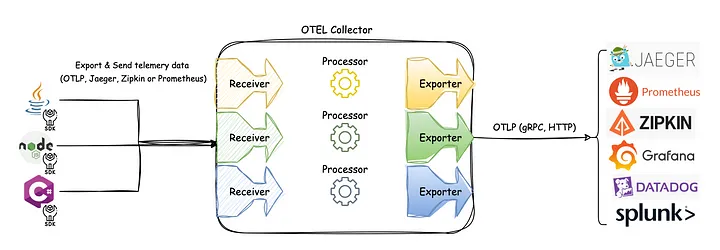类型嵌入
在一个类型的定义中嵌入其它类型
接口
语义:方法集合并入
接口类型声明了由一个方法集合代表的接口
1
2
3
4
5
6
7
8
9
10
| type E interface {
M1()
M2()
}
type I interface {
M1()
M2()
M3()
}
|
完全等价:类型嵌入,新接口类型将嵌入的接口类型的方法集合,并入到自身的方法集合中 - 接口组合
1
2
3
4
5
6
7
8
9
| type E interface {
M1()
M2()
}
type I interface {
E
M3()
}
|
Go 标准库
io/io.go1
2
3
4
5
6
7
8
9
10
11
| type Reader interface {
Read(p []byte) (n int, err error)
}
type Writer interface {
Write(p []byte) (n int, err error)
}
type Closer interface {
Close() error
}
|
io/io.go1
2
3
4
5
6
7
8
9
10
11
12
13
14
15
16
17
18
19
20
| type ReadWriter interface {
Reader
Writer
}
type ReadCloser interface {
Reader
Closer
}
type WriteCloser interface {
Writer
Closer
}
type ReadWriteCloser interface {
Reader
Writer
Closer
}
|
在 Go 1.14 之前:接口类型嵌入的接口类型的方法集合不能有交集,且嵌入的方法名字不能与新接口的其它方法重名
1
2
3
4
5
6
7
8
9
10
11
12
13
14
15
16
17
18
19
20
21
22
23
| package main
type I1 interface {
M1()
}
type I2 interface {
M1()
M2()
}
type I3 interface {
I1
I2
}
type I4 interface {
I2
M2()
}
func main() {
}
|
从 Go 1.14 开始,移除了上述约束
接口类型只能嵌入接口类型
结构体
Embedded Field
1
2
3
4
5
6
7
8
9
10
11
12
13
14
15
16
17
18
| type T1 int
type t2 struct {
n int
m int
}
type I interface {
M1()
}
type S1 struct {
T1
*t2
I
a int
b string
}
|
用法
1
2
3
4
5
6
7
8
9
10
11
12
13
14
15
16
17
18
19
20
21
22
23
24
25
26
27
28
29
30
31
32
33
34
35
36
37
38
| type MyInt int
func (n *MyInt) Add(m int) {
*n += MyInt(m)
}
type t struct {
a int
b int
}
type S struct {
*MyInt
t
io.Reader
s string
n int
}
func main() {
m := MyInt(17)
r := strings.NewReader("hello, go")
s := S{
MyInt: &m,
t: t{a: 1, b: 2},
Reader: r,
s: "demo",
}
sl := make([]byte, len("hello, go"))
_, _ = s.Reader.Read(sl)
fmt.Println(string(sl))
s.MyInt.Add(5)
fmt.Println(*s.MyInt)
}
|
约束
嵌入字段类型的底层类型不能为指针类型
1
2
3
4
5
| type MyInt *int
type S struct {
MyInt
}
|
嵌入字段的名字在结构体定义必须唯一,即同一个结构体中无法容纳名字相同的嵌入字段
1
2
3
4
| package a
type T struct {
}
|
1
2
3
4
| package b
type T struct {
}
|
1
2
3
4
5
6
| package main
type S struct {
a.T
b.T
}
|
继承
实际为组合(代理)
1
2
3
4
5
6
7
8
9
10
11
12
13
14
15
16
17
18
| func main() {
m := MyInt(17)
r := strings.NewReader("hello, go")
s := S{
MyInt: &m,
t: t{a: 1, b: 2},
Reader: r,
s: "demo",
}
sl := make([]byte, len("hello, go"))
_, _ = s.Read(sl)
fmt.Println(string(sl))
s.Add(5)
fmt.Println(*s.MyInt)
}
|
- 通过结构体类型 S 的变量 s 调用 Read 方法
- Go 发现结构体类型 S 自身并没有定义 Read 方法
- Go 会查看 S 的
嵌入字段对应的类型是否定义了 Read 方法
s.Read 会被转换为 s.Reader.Read
- 嵌入字段 Reader 的 Read 方法被
提升为 S 的方法,放入到了 S 的方法集合
1
2
3
4
5
6
7
8
9
10
11
12
13
14
15
16
17
18
19
20
21
22
23
24
25
26
27
28
29
30
31
32
33
| func main() {
m := MyInt(17)
r := strings.NewReader("hello, go")
s := S{
MyInt: &m,
t: t{a: 1, b: 2},
Reader: r,
s: "demo",
}
sl := make([]byte, len("hello, go"))
_, _ = s.Read(sl)
fmt.Println(string(sl))
s.Add(5)
fmt.Println(*s.MyInt)
printMethods(s)
}
func printMethods(i interface{}) {
fmt.Println("== Methods ==")
dump := reflect.TypeOf(i)
for i := 0; i < dump.NumMethod(); i++ {
fmt.Printf("%s\n", dump.Method(i).Name)
}
}
|
实际为组合(delegate),S 只是一个代理

方法集合
结构体类型可以嵌入任意自定义类型或者接口类型
接口
嵌入的接口类型的方法集合并入结构体类型 T 的方法集合(*T 类型的方法集合包含 T 类型的方法集合)
1
2
3
4
5
6
7
8
9
10
11
12
13
14
15
16
17
18
19
20
21
22
23
24
25
26
27
28
29
30
31
32
33
34
35
36
| type I interface {
M1()
M2()
}
type T struct {
I
}
func (T) M3() {}
func dumpMethodSet(i interface{}) {
fmt.Printf("== Methods of %T ==\n", i)
dump := reflect.TypeOf(i)
for i := 0; i < dump.NumMethod(); i++ {
fmt.Printf("%s\n", dump.Method(i).Name)
}
}
func main() {
var t T
var p *T
dumpMethodSet(t)
dumpMethodSet(p)
}
|
当结构体嵌入多个接口类型的方法集合存在交集时,可能会编译报错
PS:接口类型嵌入接口类型,如果存在交集,从 Go 1.14 开始,不再编译报错
1
2
3
4
5
6
7
8
9
10
11
12
13
14
15
16
17
18
19
20
21
22
23
24
| type E1 interface {
M1()
M2()
M3()
}
type E2 interface {
M1()
M2()
M4()
}
type T struct {
E1
E2
}
func main() {
t := T{}
t.M4()
}
|
- 嵌入其它类型的结构体类型本身是一个
代理
- 在调用实例所代理的方法时,Go 会首先查看结构体
自身是否实现了该方法
- 如果实现了,Go 会
优先使用结构体自身实现的方法
- 如果没有实现,会查找结构体中
嵌入字段的方法集合中,是否包含了该方法
- 如果多个嵌入字段都包含了
同名方法,即方法集合存在交集,此时编译器将无法确定使用哪个方法
- 解决方案
- 消除接口类型的方法集合存在
交集的情况
- 在结构体类型中新增
自身的实现,让编译器优先选择结构体的实现
1
2
3
4
5
6
7
8
9
10
11
12
13
14
15
16
17
18
19
20
21
22
23
24
25
26
27
28
29
| type E1 interface {
M1()
M2()
M3()
}
type E2 interface {
M1()
M2()
M4()
}
type T struct {
E1
E2
}
func (T) M1() {
fmt.Println("T.M1")
}
func (T) M2() {
fmt.Println("T.M2")
}
func main() {
t := T{}
t.M1()
t.M2()
}
|
简化单元测试的编写:结构体类型也是其内部嵌入的接口类型的一个实现
employee.go1
2
3
4
5
6
7
8
9
10
11
12
13
14
15
16
17
18
19
20
21
22
23
24
25
26
27
28
| package employee
type Result struct {
Count int
}
func (r Result) Int() int {
return r.Count
}
type Rows []struct{}
type Stmt interface {
Close() error
NumInput() int
Exec(stmt string, args ...string) (Result, error)
Query(args []string) (Rows, error)
}
func MaleCount(s Stmt) (int, error) {
result, err := s.Exec("select count(*) from employee_tab where gender=?", "1")
if err != nil {
return 0, err
}
return result.Count, nil
}
|
employee_test.go1
2
3
4
5
6
7
8
9
10
11
12
13
14
15
16
17
18
19
20
21
22
| package employee
import "testing"
type fakeStmtForMaleCount struct {
Stmt
}
func (fakeStmtForMaleCount) Exec(stmt string, args ...string) (Result, error) {
return Result{Count: 5}, nil
}
func TestEmployeeMaleCount(t *testing.T) {
f := fakeStmtForMaleCount{}
count, _ := MaleCount(f)
if count != 5 {
t.Errorf("MaleCount(f) = %d; want 5", count)
return
}
}
|
结构体
1
2
3
4
5
6
7
8
9
10
11
12
13
14
15
16
17
18
19
20
21
22
23
24
25
26
27
28
29
30
31
32
33
34
35
36
37
38
39
40
41
42
43
44
45
46
47
48
49
50
51
52
53
54
55
56
57
58
59
60
61
62
63
64
65
| type T1 struct{}
func (T1) T1M1() {}
func (*T1) PT1M2() {}
type T2 struct{}
func (T2) T2M1() {}
func (*T2) PT2M2() {}
type T struct {
T1
*T2
}
func dumpMethodSet(i interface{}) {
fmt.Printf("== Methods of %T ==\n", i)
dump := reflect.TypeOf(i)
for i := 0; i < dump.NumMethod(); i++ {
fmt.Printf("%s\n", dump.Method(i).Name)
}
fmt.Println()
}
func main() {
t := T{
T1: T1{},
T2: &T2{},
}
dumpMethodSet(t.T1)
dumpMethodSet(&t.T1)
dumpMethodSet(*t.T2)
dumpMethodSet(t.T2)
dumpMethodSet(t)
dumpMethodSet(&t)
}
|
- 结构体类型的方法集合
包含嵌入的接口类型的方法集合
- 当结构体类型 T 包含嵌入字段 E 时,
*T 的方法集合要包含的是 *E 的方法集合(范围更广)
类型定义
defined
通过类型声明语法声明的类型都被称为 defined 类型,新定义的 defined 类型与原 defined 类型为不同类型
1
2
3
4
5
6
7
8
9
| type I interface {
M1()
M2()
}
type T int
type NI I
type NT T
|
基于接口类型创建的 defined 接口类型的方法集合与原接口类型的方法集合完全一致
无隐式继承:基于自定义非接口类型的 defined 类型的方法集合为空
1
2
3
4
5
6
7
8
9
10
11
12
13
14
15
16
17
18
19
20
21
22
23
24
25
26
27
28
29
30
31
32
33
34
35
36
37
| type T struct{}
func (t T) M1() {}
func (t *T) M2() {}
type T1 T
func dumpMethodSet(i interface{}) {
fmt.Printf("== Methods of %T ==\n", i)
dump := reflect.TypeOf(i)
for i := 0; i < dump.NumMethod(); i++ {
fmt.Printf("%s\n", dump.Method(i).Name)
}
}
func main() {
var t T
var pt *T
var t1 T1
var pt1 *T1
dumpMethodSet(t)
dumpMethodSet(t1)
dumpMethodSet(pt)
dumpMethodSet(pt1)
}
|
alias
无论原类型是接口类型还是非接口类型,类型别名与原类型拥有完全相同的方法集合
1
2
3
4
5
6
7
8
9
10
11
12
13
14
15
16
17
18
19
20
21
22
23
24
25
26
27
28
29
30
31
32
33
34
35
36
37
38
39
| type T struct{}
func (t T) M1() {}
func (t *T) M2() {}
type T1 = T
func dumpMethodSet(i interface{}) {
fmt.Printf("== Methods of %T ==\n", i)
dump := reflect.TypeOf(i)
for i := 0; i < dump.NumMethod(); i++ {
fmt.Printf("%s\n", dump.Method(i).Name)
}
}
func main() {
var t T
var pt *T
var t1 T1
var pt1 *T1
dumpMethodSet(t)
dumpMethodSet(t1)
dumpMethodSet(pt)
dumpMethodSet(pt1)
}
|
小结
是否继承
|
defined |
alias |
| 接口类型 |
Y |
Y |
| 非接口类型 |
N |
Y |
- 基于
非接口类型的 defined 类型创建的新 defined 类型不会继承原类型的方法集合 - 符合语义
- 通过
alias 定义的新类型和原类型拥有相同的方法集合












